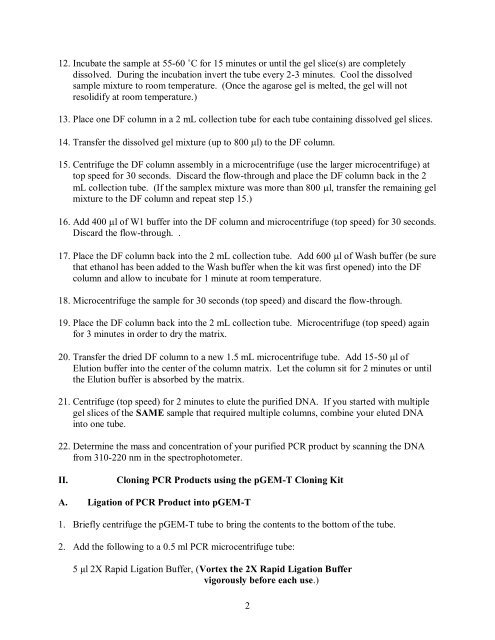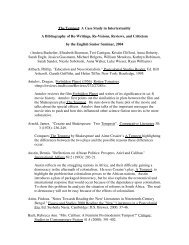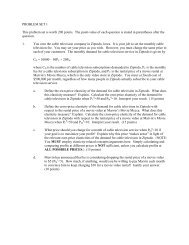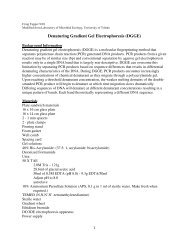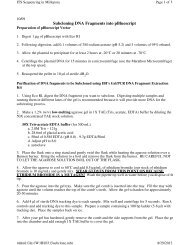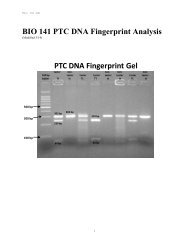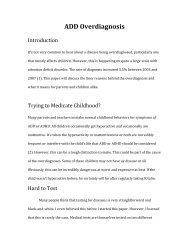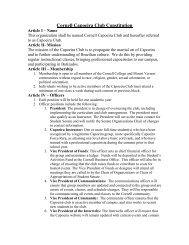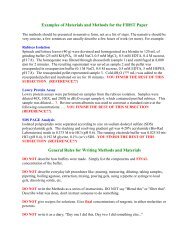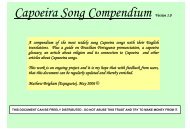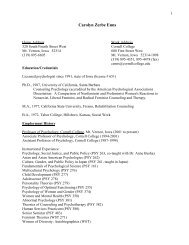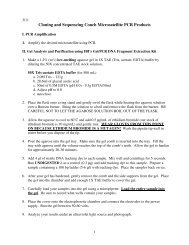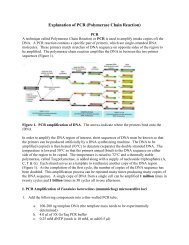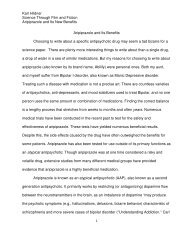Cloning Cytochrome b PCR Fragment into pGEM-T - Cornell College
Cloning Cytochrome b PCR Fragment into pGEM-T - Cornell College
Cloning Cytochrome b PCR Fragment into pGEM-T - Cornell College
Create successful ePaper yourself
Turn your PDF publications into a flip-book with our unique Google optimized e-Paper software.
12. Incubate the sample at 55-60 ˚C for 15 minutes or until the gel slice(s) are completelydissolved. During the incubation invert the tube every 2-3 minutes. Cool the dissolvedsample mixture to room temperature. (Once the agarose gel is melted, the gel will notresolidify at room temperature.)13. Place one DF column in a 2 mL collection tube for each tube containing dissolved gel slices.14. Transfer the dissolved gel mixture (up to 800 l) to the DF column.15. Centrifuge the DF column assembly in a microcentrifuge (use the larger microcentrifuge) attop speed for 30 seconds. Discard the flow-through and place the DF column back in the 2mL collection tube. (If the samplex mixture was more than 800 l, transfer the remaining gelmixture to the DF column and repeat step 15.)16. Add 400 l of W1 buffer <strong>into</strong> the DF column and microcentrifuge (top speed) for 30 seconds.Discard the flow-through. .17. Place the DF column back <strong>into</strong> the 2 mL collection tube. Add 600 l of Wash buffer (be surethat ethanol has been added to the Wash buffer when the kit was first opened) <strong>into</strong> the DFcolumn and allow to incubate for 1 minute at room temperature.18. Microcentrifuge the sample for 30 seconds (top speed) and discard the flow-through.19. Place the DF column back <strong>into</strong> the 2 mL collection tube. Microcentrifuge (top speed) againfor 3 minutes in order to dry the matrix.20. Transfer the dried DF column to a new 1.5 mL microcentrifuge tube. Add 15-50 l ofElution buffer <strong>into</strong> the center of the column matrix. Let the column sit for 2 minutes or untilthe Elution buffer is absorbed by the matrix.21. Centrifuge (top speed) for 2 minutes to elute the purified DNA. If you started with multiplegel slices of the SAME sample that required multiple columns, combine your eluted DNA<strong>into</strong> one tube.22. Determine the mass and concentration of your purified <strong>PCR</strong> product by scanning the DNAfrom 310-220 nm in the spectrophotometer.II.<strong>Cloning</strong> <strong>PCR</strong> Products using the <strong>pGEM</strong>-T <strong>Cloning</strong> KitA. Ligation of <strong>PCR</strong> Product <strong>into</strong> <strong>pGEM</strong>-T1. Briefly centrifuge the <strong>pGEM</strong>-T tube to bring the contents to the bottom of the tube.2. Add the following to a 0.5 ml <strong>PCR</strong> microcentrifuge tube:5 μl 2X Rapid Ligation Buffer, (Vortex the 2X Rapid Ligation Buffervigorously before each use.)2


